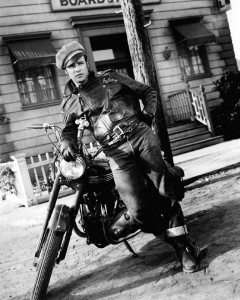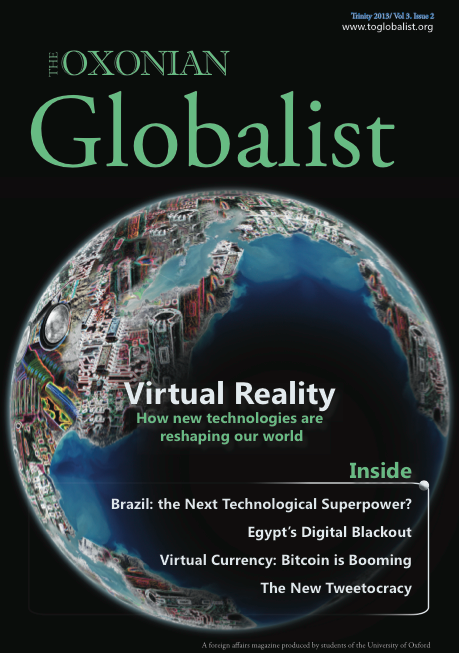
Marlon Brando in “The Wild One”: the epitome of Norman Mailer’s hipster. Photo by twm1340 via Flickr.
Though victorious, the Americans who had survived the Second World War entered the 1950s a traumatised generation. They fled the cities for suburban houses bought on credit, flanked by big red cars, the symbol of a new order in which all their desires and aspirations were, or soon would be, within reach.
One of the most interesting dissections of this process is Norman Mailer’s essay, “The White Negro”, published in the Summer 1957 issue of Dissent Magazine. The essay presents a genealogy of conformity in American society, followed by a detailed description of its antithesis: the “hipster” or “white Negro”.
An era of conformity
The essay begins where William Faulkner’s acceptance speech at the 1950 Nobel Prize Banquet left off. How could one live freely and creatively in a world where any ‘problems of the spirit’ had been displaced by the more visceral fear of mass destruction?
The twentieth century’s struggles between nations and ideas reduced individuals to their most basic, statistical form, leaving them to die in dank trenches, concentration camps, and irradiated cities.
Hence Mailer’s argument that although the Allied victory in the Second World War should have preserved individual liberty in the Western world, it in fact ushered in a new era of extreme conformity. The world wars confronted people with the notion that distinguishing oneself from the masses meant putting a price on one’s head. For the most part, the remnants of radical elites quietly melted back into mainstream society.
Portrait of the Hipster as an Outlaw
The hipster, as understood by Mailer in the mid-twentieth century, refuses submission to these anxieties. In fact, he can only function on the fringes of society, for he defines himself in opposition to any notion of collective responsibility. He is “rarely an artist,” and “never a writer”, but more likely “a petty criminal, a hobo, a carnival roustabout or a free-lance moving man in Greenwich Village”. He is his only engagement.
This lifestyle is only new to the white hipster, a persona which emerged in the West after the world wars. For America’s blacks, the vigorous pursuit of personal meaning meant risking one’s life. Yet Mailer’s white hipsters would adopt the vernacular and tastes of black Americans, jazz being the most notable of these, thereby initiating a radical detachment from conventional society; hence the “white Negro”.
Liberation Through Violence
Perhaps most controversially, Mailer defines the hipster as a psychopath. However, it is important to note the simple distinction between a psychotic and a psychopath: a psychotic is legally insane, whereas the psychopath is not. His psychopathy articulates itself in the quest for instant gratification, notably regards to sex and violence.
A hipster lives for the orgasm, and spends his time attempting to achieve the next, most intense one imaginable. Mailer argues that this pursuit can translate itself into a penchant for violence, his ultimate clash with American society.
If a hipster murders, contends Mailer, it is to convince himself of his own courage and vitality. Any reasonable reader would likely condemn this assertion as absurd. Mailer explains himself by providing the example of an old store clerk’s murder by two youths. While he concedes that the murder itself is senseless and does not require any great physical effort on the part of the culprits, it requires some form of courage because one murders not only an old clerk but the presumed sanctity of private property, propelling oneself into conflict with the police and society’s conception of justice.
Nevertheless, for all Mailer’s attempts at situating the hipster within the context of post-world war trauma, this persona exists across socio-historical boundaries. There will always be individuals ready to seek liberation and self-gratification through violence rather than submit to rigid societal mores. However, all this aggression can only ever serve to reveal a larger, systematic cycle of violence.
Take, for instance, the increasing number of “rage killings” in the United States since the 1980s. A staggering number of these were staged under the pretence of rebellion against a conformist, intolerant society. When Dylan Klebold and Eric Harris massacred their classmates at Columbine High School in 1999, it was an entire culture they sought to defy and expose for its inherent violence and superficiality.
Whether those targeted are truly guilty of intolerance and violence or not, aggressive action against them by alienated individuals like Klebold and Harris never really detaches itself from the system it deplores. Instead, it reinforces it by demonstrating the derangement of its opponents, who unfairly condemn their neighbours to mutilation or death. We can never achieve true liberation from the tyranny of bigoted conventions at the expense of our fellows.
The Hipster Tamed
Despite its chequered history, the word “hipster” today denotes little more than an eccentric bourgeois consumer. Those who share more than just the hipster’s penchant for rejecting convention are now more likely to do so in the context of global commerce and marketing.
While Mailer once imagined the rise of a hipster elite of 100,000 “politicians, professional soldiers, newspaper columnists, entertainers, artists, jazz musicians, promiscuous homosexuals, and half the executives of Hollywood, television, and advertising”, challenging societal conventions through the rebellion of the psychopathic white negro, such a class is nowhere to be found.
Few of today’s intellectuals seriously consider the possibility of a future beyond globalised capitalism. As for direct action to undermine the current state of affairs, it is limited in scope and largely unsustainable, or ignored by the elites – as demonstrated by the failure of the Occupy Movement. Bold aesthetics have taken the place of substantive action, while a generalised obsession with careers slowly eats away at our courage to oppose prejudice and conformity, whether for others or ourselves.



